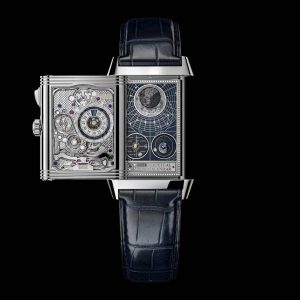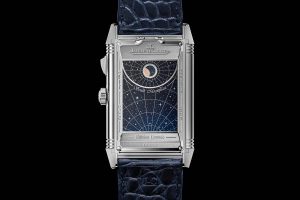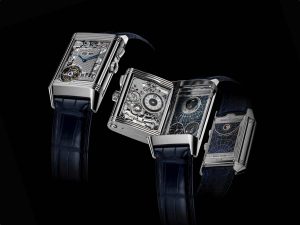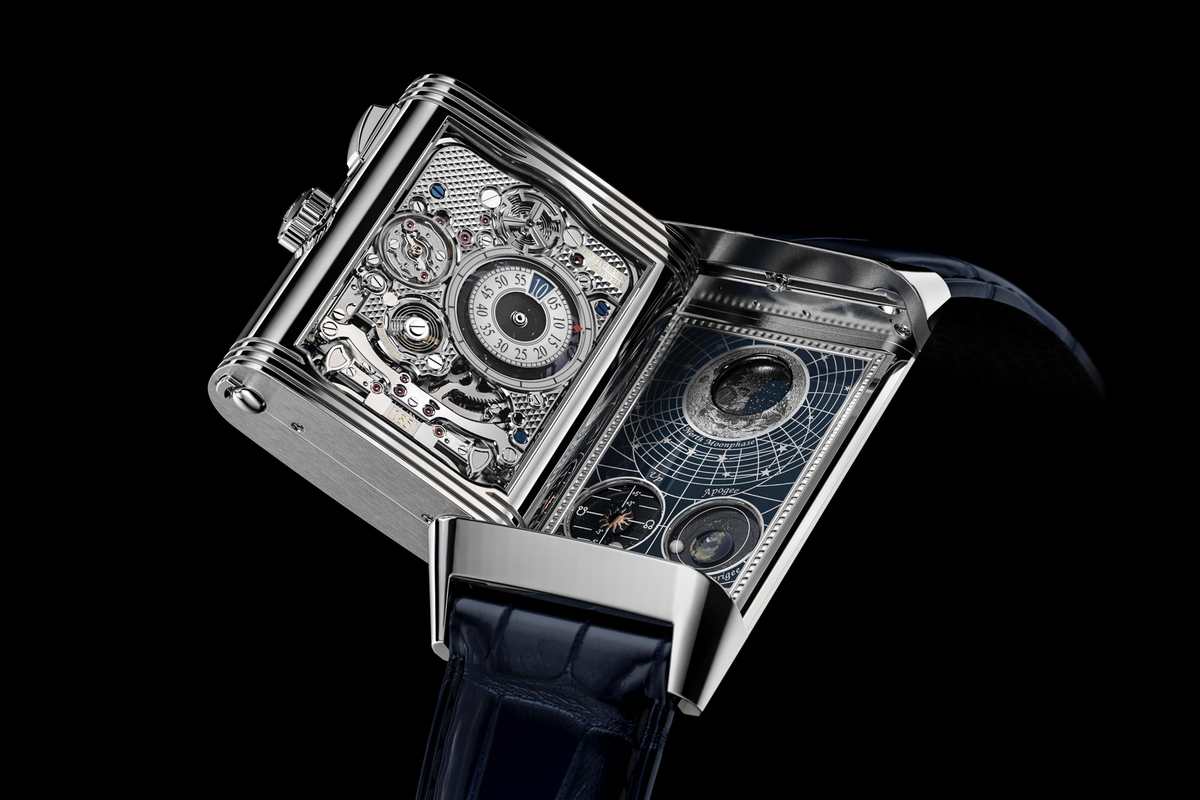In 1931, Jaeger-LeCoultre created his most iconic model. A simple rectangular-shaped timepiece that, by rotating on itself, protected itself during animated polo matches. Today the Swiss Maison unveils the Reverso Hybris Mechanica Caliber 185 Quadriptyque at the Watches & Wonders 2021 show. This is the most complicated Reverso ever built to date. Available in only ten numbered copies, it boasts 11 very high functions such as the perpetual calendar, the minute repeater, and a long list of sophisticated astronomical indications. These include the Superluna and eclipse’s precision, obviously with the help of mechanics alone, on four sides of its rectangular 18k white gold case.

In essence, it is the first watch in the world with four faces with time indications. Using the original Reverso design, Jaeger-LeCoultre has created a case with two faces powered by the in-house Caliber 185 and a central part with two faces. The latter are synchronized and updated by the main movement every day at the stroke of midnight. A brilliant and unique solution. But the most incredible thing is that the complications and panel upgrade system all fit into a small 51 x 31 x 15mm case.
First window
The tourbillon certainly could not be missing from the Hybris Mechanica Caliber 185 Quadriptyque. This is the most spectacular and complex mechanical complication, positioned at 7 o’clock on the first dial of the case. The flying tourbillon is so called because being attached to the movement only by a lower bridge while making one rotation per minute seems to fly. The perpetual calendar is also shown here, with the indications all instantly snapping after midnight.

Second window
Jaeger-LeCoultre has extensive experience in complicating the minute repeater. In its course, the Maison has produced as many as 200 calibers with a special function. The second face of the case pays homage to Jaeger-LeCoultre qualities as an innovator of alarm watches. By sliding the slide positioned just above the crown, the Reverso Quadriptyque begins to strike the chimes to repeat the hours with musical notes. Here we find a second time display that indicates the same time as the first dial but in jumping format for the hours and snap-on format for the minutes. When the Reverso Quadriptyque strikes the hour, it sets a large number of springs, cams, hammers, and gongs in motion.

Third Window
The third group of indications is displayed on the inside of the Reverso case. For the first time in the history of horology, the synodic, draconic and anomalistic cycles are displayed in a single clock. The opening at 12 o’clock shows a progressively laser engraved moon revealed and covered, corresponding to the synodic cycle seen from the northern hemisphere. The display on the left side of the lower half of the dial shows the draconic process. This indicates the intersection of the orbit of the Moon with that of the Earth around the Sun. If the Moon and the Sun’s counter are in horizontal alignment, the Moon, the Earth, and the Sun are all in the same plane.
Furthermore, if the Moon is in a new or complete moon phase during this alignment, an eclipse occurs on Earth. To the draconic cycle’s right, a representation of the Moon traces an elliptical orbit around a hemispherical enameled representation of the Earth. This shows the anomalistic cycle or the cycle of varying distances between the Earth and the Moon. When the Moon is in its full phase near its perigee, the event known as a supermoon occurs at its closest point to the Earth.

Fourth Window
The last face of this timepiece, the outer one of the central part, features a depiction of the moon phases in the southern hemisphere. Most of the moon phase indications offer the perspective of the northern hemisphere. Made in Jaeger-LeCoultre’s Atelier des Métiers Rares®, an engraved and lacquered map of the starry sky in a palette of blue shades acts as a background to the Moon in rose gold.
The watch’s four working faces’ secret is encapsulated in a solution first used in the 2006 Reverso Hybris Mechanica Grande Complication à Triptyque. Every day at midnight, a pin protrudes from the case’s main movement to activate a mechanical corrector in the central part. . This advances the views of the central part. The mechanism that activates these indications is directly inserted in the main part itself, without other plates that would increase the watch’s thickness.

With the Reverso Hybris Mechanica Quadriptyque Jager-LeCoultre wanted to mark the 90th anniversary of its most recognizable watch indelibly. The four dials crammed with indications make this piece of Highest Watchmaking an incredible timepiece. A true collector’s item for all watch enthusiasts.








